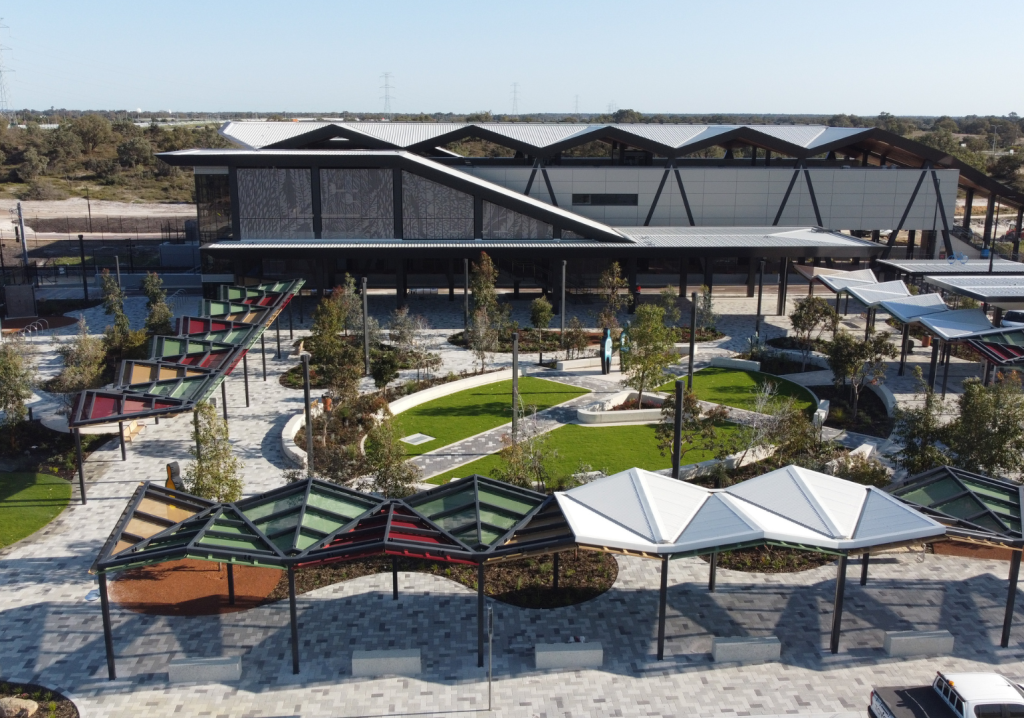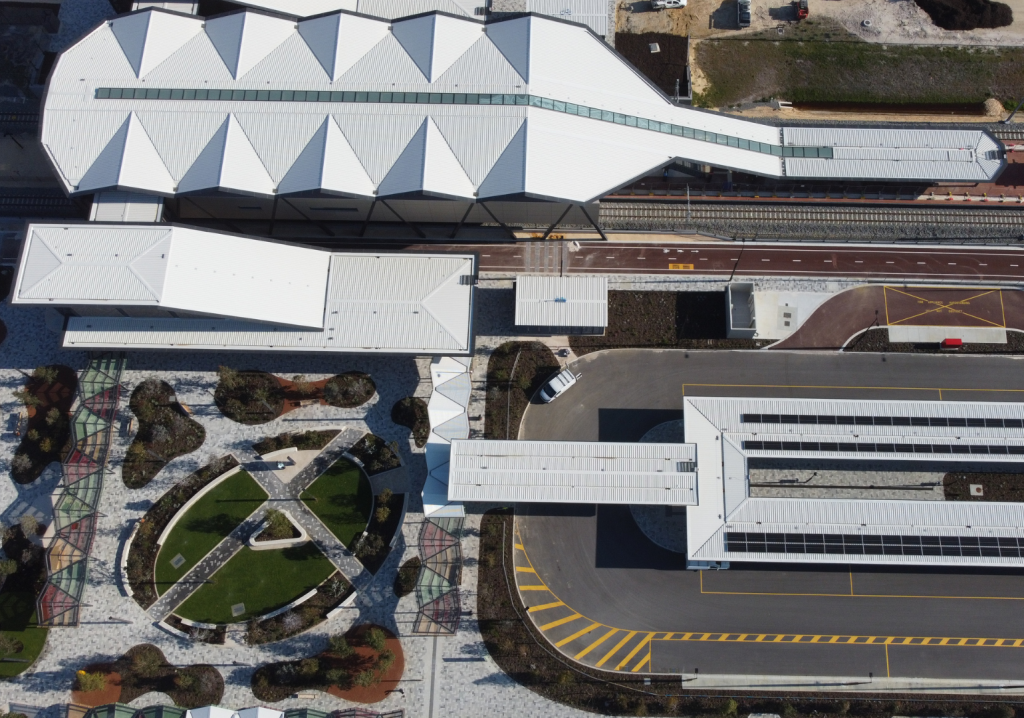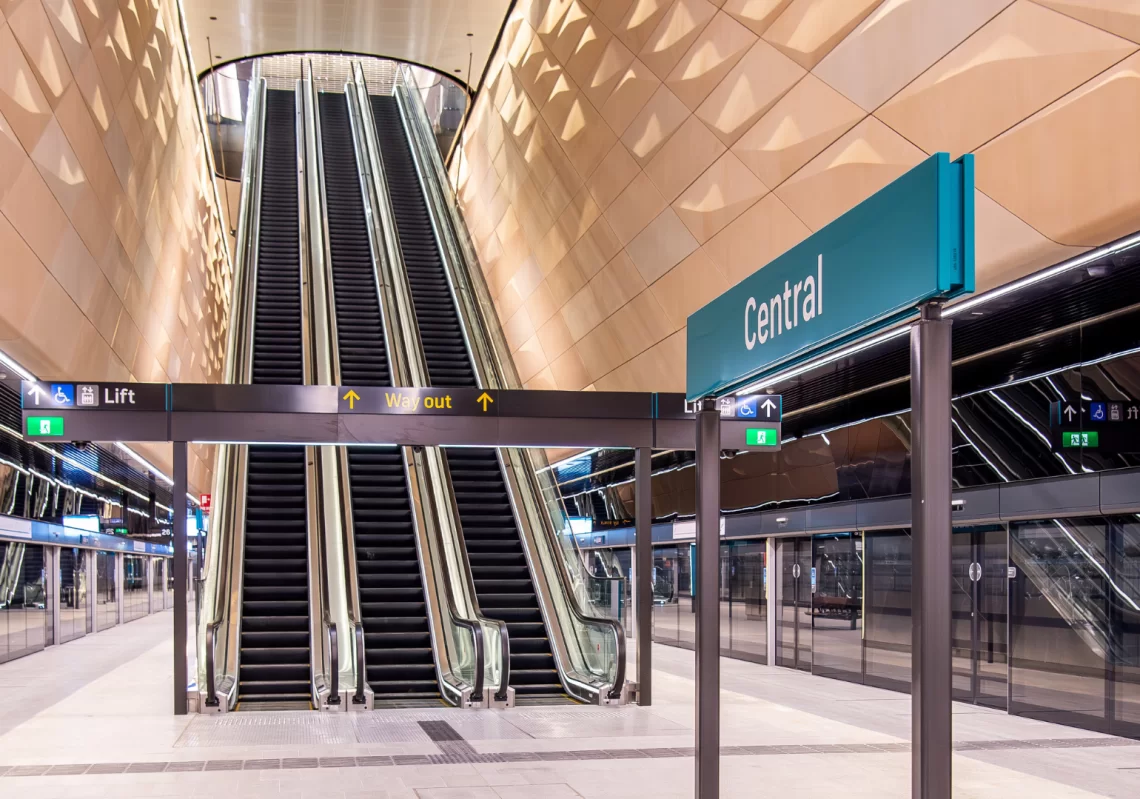In the past 12 months, construction company Laing O’Rourke has achieved multiple 6 Star Green Star ratings. What has made these projects so special?
According to the Green Building Council of Australia (GBCA), a 6 Star Green Star rating showcases world leadership in sustainable building practices. Ratings look at the sustainability and liveability of the entire project’s design, construction and operation, covering everything from energy efficiency to water use to material selection.
In Australia, Laing O’Rourke has achieved no fewer than six 6 Star benchmarks of the Green Star scheme over the past 12 months, on projects including:
- Central Station Metro, one of the first underground stations Green Star-certified in Australia
- Ellenbrook Station, part of the Morley-Ellenbrook Line project in Western Australia
- Ballajura Station, part of the Morley-Ellenbrook Line in Western Australia
Union Station, part of the Level Crossing Removal Project as part of Victoria’s Big Build. This certification is the highest sustainability rating ever awarded to a rail project in Victoria.
So how was this achieved? And what can other construction companies learn from the sustainable engineering practices required to earn such an accolade?

Holistic analysis
Significant to this high benchmark achievement is having an in-house team of experts to review, guide and assist projects through the verification process.
Prior to pulling together evidence for certifications, gaining buy-in, and explaining the outcomes and benefits of embedding sustainability tools, such as Green Star, to the team is essential. There is also a myriad of powerful tools, such as analytic processes that should be introduced at an early design stage to inform responsible decision making on projects.

It is important to complete a holistic analysis of high-impact materials early in the design phase – such as concrete mixes and strengths required, structural and reinforcement steel requirements, pavers and cladding selections. This is to assess their whole-of-life environmental impacts, cost-benefit analysis during optioneering phases, as well as placemaking outcomes and user/staff safety impacts.
“It’s important to consider robustness of design, how easy it is to install and maintain over time, as well as the embodied carbon impacts from construction through to end of life,” Hollie Hynes, General Manager – Sustainability and Environment at Laing O’Rourke told create.
“This informs responsible decision-making that looks to minimise the carbon footprint of projects.”
Not all about materials
The 6 Star Green Star process is one that touches on and improves every part of design, construction, maintenance, physical use and expected life of the building, which in some cases can be up to 120 years for train stations.
Therefore, when design initiatives can reduce use of energy, water or material over the expected life of the building, these can have significant cumulative savings. An example is Ellenbrook Station in Perth, where significant water savings in permanent irrigation demand selection and installation of highly efficient fixtures and fittings.
This has contributed to an expected 67 per cent potable water consumption reduction (modelled using Green Star’s Potable Water Calculator) when compared to a standard practice building. This equates to an estimated potable water saving of 16,000 kL per year.
Examples of the considerations for Green Star certifications, according to the GBCA, include but are not limited to:
- Adopt practices and processes that enable and support best practice sustainability outcomes throughout design, construction and ongoing operation
- Address consumption of resources within building construction and encourage selection of low-impact materials
- Reduce car dependency, encourage alternative forms of transportation
- Water and energy efficiency
- Protect environmentally significant areas
- Implement innovative practices, processes and strategies that promote sustainability in the built environment
Lifting the Green Star bar
The 6 Star Green Star-rated Ellenbrook Station is the highest-scoring railway station in Australia in terms of Green Star ratings.
Such sustainability ratings are not awarded without certain fundamentals. Big scores in energy reduction are a must; 75 points or above is required for a 6 Star certification.
For Ellenbrook Station, Laing O’Rourke achieved a score of 89 points. In the Design Review phase, the project achieved a very high scoring 5 Star rating, with the delivery team working hard to improve the as-built result to target a 6 Star outcome.
Other essentials for a 6 Star rating include high scores in innovation and development away from land that is of high ecological value.
“Green Star [allows you to] ‘pick your own journey’, where you plan to achieve points within the 10 Green Star categories that range from energy through to water, materials, land use, and ecology and innovation. The more points that are targeted, the higher projects can score and the better your chances of a 6 Star outcome.”

How to engineer a 6 Star result
During the design stage of the Morley-Ellenbrook Line project, Laing O’Rourke calculated the potential future payback of varying levels of solar PV, as well as EV charging infrastructure.
Each of the five stations settled on 100 kW of building-integrated solar, resulting in 500 kW overall with futureproofing for battery storage. This energy also feeds into the EV charging infrastructure.
The solar and EV charging solutions, which include 10 solar-fed EV chargers per station (50 in total), aim to futureproof the stations, without creating downside risk of stranded assets that can come from early over-supply of such infrastructure. However, careful planning and construction considerations ensure that this infrastructure can be built upon in the future with minimal disruption, should additional chargers be needed down the track due to demand increase.
Energy performance has been a standout, with highly efficient LED lights and heating, ventilation and cooling infrastructure. The team has also worked hard with their vertical transport supplier to reduce standby power and vertical transport energy loads across the stations.
Ellenbrook Station has been modelled to achieve an 81 per cent improvement in energy performance compared to a reference building as verified by the GBCA. This equates to an estimated 158 t of CO2 equivalent savings per year, with renewables contributing to an estimated 77 per cent of the building’s energy use, reducing peak electricity demand by 44 per cent.
A 6 Star Green Star outcome, however, is about more than engineering, Hynes said. It’s also about the client, engineers, designers and entire supply chain being engaged in the sustainability and circularity journey.
It has not been unusual for Laing O’Rourke to be incentivised by their clients to achieve sustainability outcomes, a powerful change from the days of building strictly to budget.
“Close collaboration in the form of an alliance contract model has made a real difference in working together to achieve extraordinary sustainability outcomes that leave a positive legacy in the industry and for the community.
“There are certain practices, materials, and processes that were implemented over the years for Green Star recognition that have now become ‘business as usual’ for the industry, which are no longer rewarded under Green Star as the tool has evolved and benchmarks have pushed the industry further.
“As the Green Star tools continue to evolve and 6 Star becomes harder and harder to achieve, it pushes us all to do better while sending the right signals to market – that we must keep challenging the status quo on our collective journey to net zero.”
Two representatives from Laing O’Rourke will explore the $955 million Sydney Metro upgrade project at an Engineers Australia event next month.



